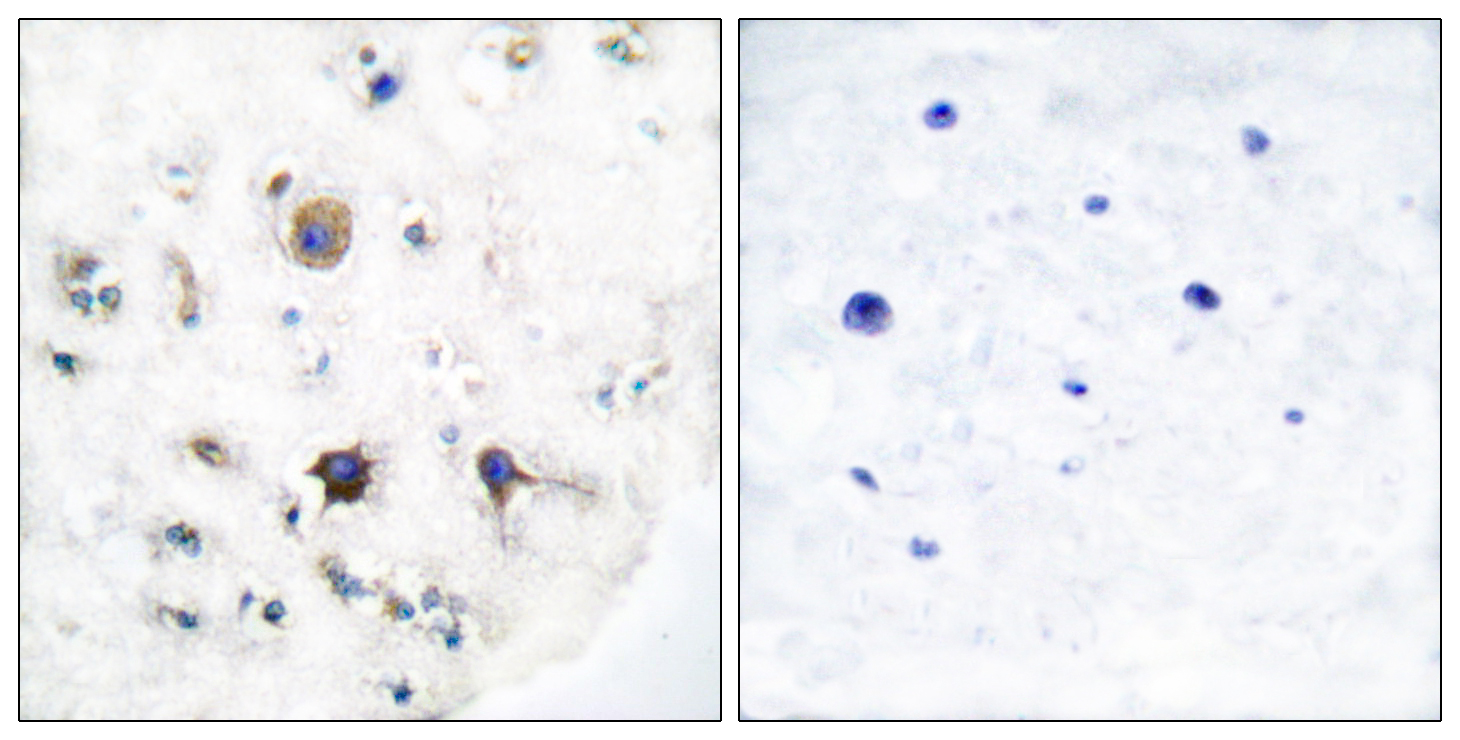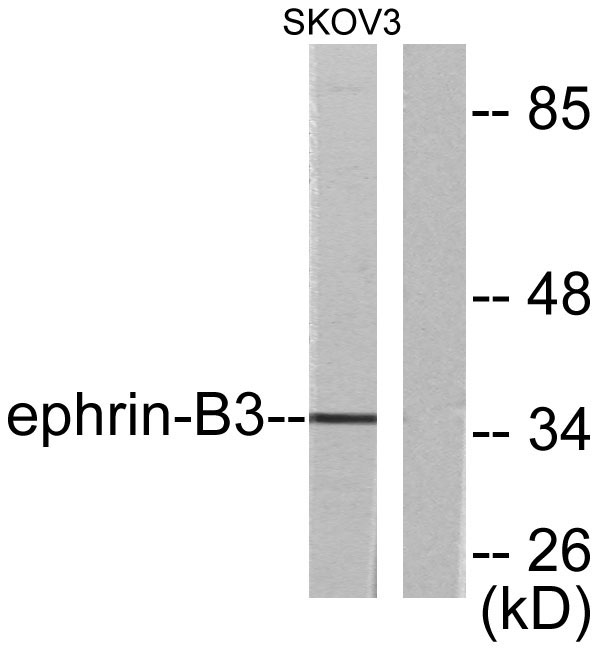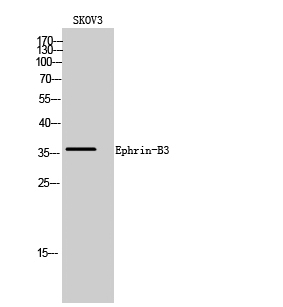产品名称
Ephrin-B3 Rabbit Polyclonal Antibody
别名
EFNB3; EPLG8; LERK8; Ephrin-B3; EPH-related receptor transmembrane ligand ELK-L3; EPH-related receptor tyrosine kinase ligand 8; LERK-8
存储缓冲液
Liquid in PBS containing 50% glycerol, 0.5% BSA and 0.02% New type preservative N.
Human Gene Link
http://www.ncbi.nlm.nih.gov/sites/entrez?db=gene&term=1949
Human Swissprot No.
Q15768
Human Swissprot Link
http://www.uniprot.org/uniprotkb/Q15768/entry
Mouse Gene Link
http://www.ncbi.nlm.nih.gov/sites/entrez?db=gene&term=13643
Mouse Swissprot No.
O35393
Mouse Swissprot Link
http://www.uniprot.org/uniprot/O35393
免疫原
The antiserum was produced against synthesized peptide derived from human EFNB3. AA range:221-270
特异性
Ephrin-B3 Polyclonal Antibody detects endogenous levels of Ephrin-B3 protein.
稀释度
WB 1:500 - 1:2000. IHC 1:100 - 1:300. ELISA: 1:20000.. IF 1:50-200
宿主
Polyclonal, Rabbit,IgG
背景介绍
EFNB3, a member of the ephrin gene family, is important in brain development as well as in its maintenance. Moreover, since levels of EFNB3 expression were particularly high in several forebrain subregions compared to other brain subregions, it may play a pivotal role in forebrain function. The EPH and EPH-related receptors comprise the largest subfamily of receptor protein-tyrosine kinases and have been implicated in mediating developmental events, particularly in the nervous system. EPH Receptors typically have a single kinase domain and an extracellular region containing a Cys-rich domain and 2 fibronectin type III repeats. The ephrin ligands and receptors have been named by the Eph Nomenclature Committee (1997). Based on their structures and sequence relationships, ephrins are divided into the ephrin-A (EFNA) class, which are anchored to the membrane by a glycosylphosphatidylinositol linkage, and the
组织表达
Highly expressed in brain; expressed in embryonic floor plate, roof plate and hindbrain segments.
细胞定位
Membrane; Single-pass type I membrane protein.
功能
function:May play a pivotal role in forebrain function. Binds to, and induce the collapse of, commissural axons/growth cones in vitro. May play a role in constraining the orientation of longitudinally projecting axons.,similarity:Belongs to the ephrin family.,subunit:Interacts with GRIP1 and GRIP2. Binds to Nipah virus G protein.,tissue specificity:Highly expressed in brain; expressed in embryonic floor plate, roof plate and hindbrain segments.,
纯化
The antibody was affinity-purified from rabbit antiserum by affinity-chromatography using epitope-specific immunogen.



